"I really didn't expect that stablecoins could be spent directly, just like using Alipay."
Ella said with some surprise, her tone carrying a sense of "the times have suddenly caught up with me."
Her husband is a somewhat well-known KOL in the Web3 circle, and he usually opened no less than five overseas bank cards to convert cryptocurrencies into fiat. They even specifically went to Hong Kong to exchange USDT for Hong Kong dollars through a narrow window.
On the first morning of their trip to Vietnam, they walked into a chain café in Ho Chi Minh City, ordered lattes and baguettes, and the staff pointed to a QR code on the cash register screen, saying it could be paid with "USDC." Ella took her husband's phone and tried to use the wallet to scan the code; the payment interface popped up, and the payment was completed in less than five seconds.
In that moment, for the first time, she didn't just hear people talk about "how great stablecoins are," but felt with her own fingers that it had truly become a part of daily life.
Before 2025, no one had thought that the next large-scale breakout of the crypto industry would actually be due to stablecoins.
Looking back at the previous two instances, Bitcoin was about decentralized value consensus, and NFTs were about a new generation of digital cultural symbols and identities. But they seemed more like symbols belonging to specific circles, and after crossing the hot searches and social media, they returned to the wallets of a few people.
But stablecoins are different this time.
For us, stablecoins may still be a concept, a piece of policy news, or a stock price chart; but for people on the other side of the world, stablecoins have long been an indispensable part of their lives.
Stablecoins are about life, about reality. They enable a person working abroad to smoothly send their salary back home, allow digital nomads to pay with USDT in a tavern, and give young people without bank accounts access to the world and the ability to participate.
Latin America | Young People Escaping the Peso
Afternoons in Buenos Aires are always hot. In a convenience store on the street, Federico is leaning against the counter with his phone, converting his recently received salary from pesos to USDT. He operated a few clicks on the Lemon Cash interface, and a few seconds later, the screen displayed: "Saldo: 873 USDT."
Federico, 26, is a UI designer at a local gaming company. This is his entire salary for the month. He didn't go to the bank or an ATM; instead, as usual, he immediately converted the pesos in his hand into dollars using stablecoins.
Federico said that when he was a child, his family used a glass jar to store dollars, which was his earliest impression of "saving money." Later, the jar was replaced with a shoebox under the bed and a compartment in the kitchen ceiling; his father even hid a few dollar bills behind the cover of the range hood. At that time, it was relatively easy to exchange for dollars. Now, to get cash in dollars, one not only has to wait in long lines but also risks being robbed.
"None of my friends keep pesos anymore; who knows if they'll still be worth anything tomorrow." He shrugged, looking as if he had long since gotten used to it.
In 2023, Argentina's annual inflation rate reached 211%, and the peso depreciated by 74% against the dollar. Over the past few years, inflation has turned the cost of living here into continuously refreshing, limitless numbers.
Sun is the founder of the-mu, where they build local entrepreneur communities around the world. They came to Argentina in 2024 to establish a Web3 entrepreneur community and organized several offline events.
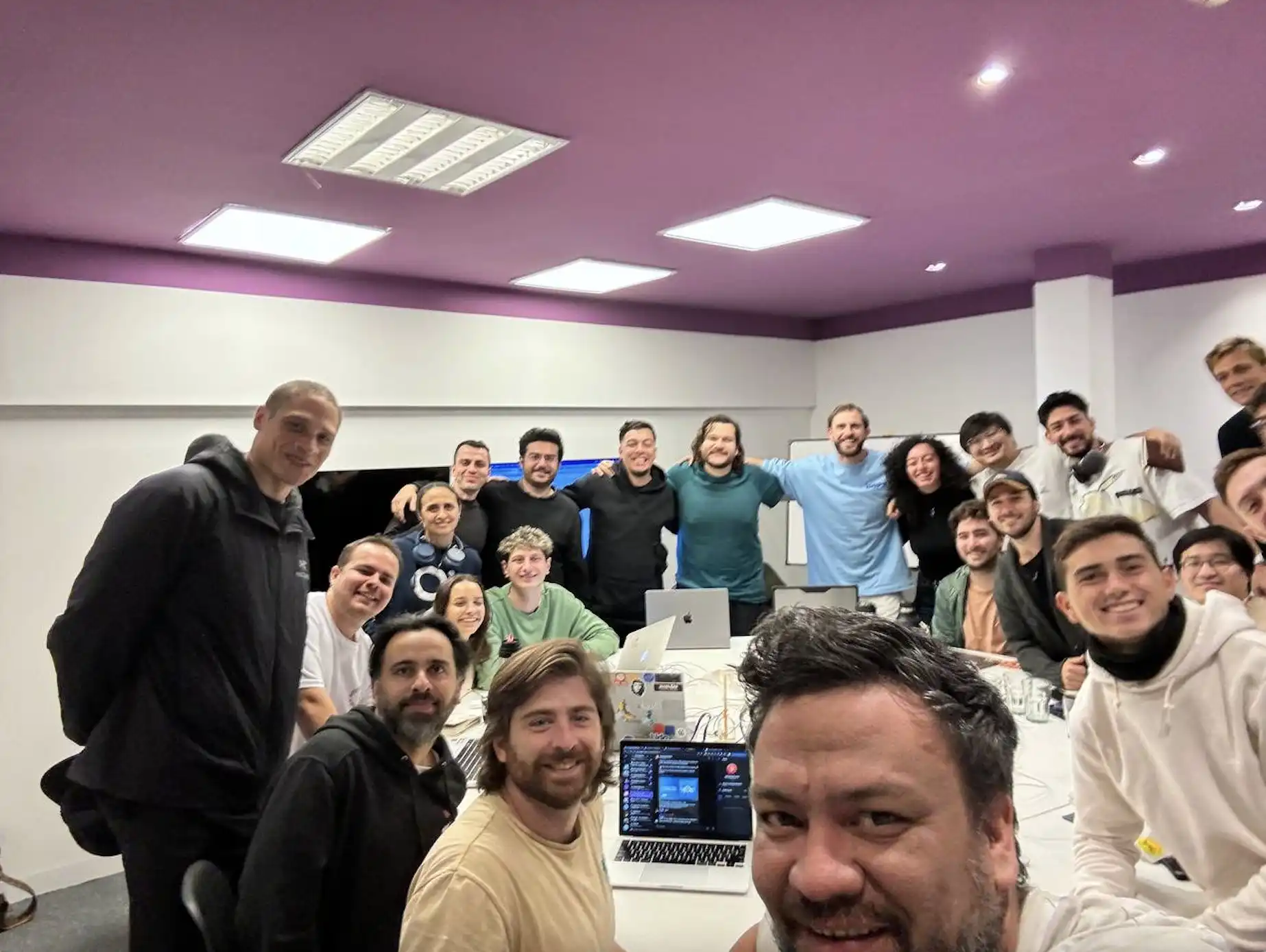
Offline event in Argentina organized by the-mu, source: Sun
Sun shared an interesting story. When he and his team visited Argentina at the end of 2023, the price of a lunch in Buenos Aires was about 50 RMB; by March 2024, when they held an event, the price had risen to 100 RMB; and by the end of 2024, it continued to rise to 130 RMB. Here, the currency has long lost its function as a measure.
Meanwhile, the official exchange rate hangs on the wall, deceiving no one, while the black market rate not only differs greatly from the official rate but is also astonishing.
"Did you know we have seven or eight different exchange rates here?" Federico said with a bit of helpless laughter, "Even Coldplay coming to hold a concert can create a temporary exchange rate."
He was referring to an event in 2022 when the Argentine government indeed introduced a special exchange rate policy for international concerts, which was much higher than the normal rate, to cope with the sharply depreciating peso and ensure that performers received sufficient dollar earnings. This is a country where absurdity has become the norm.
In such an unreliable system, USDT, USDC, and other stablecoins began to emerge like ice floes from the water's surface. Initially, people exchanged them secretly; the black market dollars were unsafe, and hiding them under the bed was also risky. Later, people discovered that the wallet address on their phones might be a safer way to save.
In 2024, Latin America became one of the fastest-growing regions for global crypto expansion, receiving over $415 billion in cryptocurrency, with its global share rising from 7.3% to 9.1%, and an annual growth rate of 42%. Among users opening crypto apps in Latin America, 40% are from Argentina. In that year, the total trading volume of crypto assets in Argentina reached $91.1 billion, with nearly 10% of Argentinians using stablecoins monthly, and at its peak, the activity level approached 25%.
Local stablecoin platforms like Lemon Cash and Belo sprang up like mushrooms after rain, absorbing the entire country's disappointment with fiat currency.
"Our fiat currency is just an extremely worthless memecoin," Sun said, reflecting the consensus among all local Web3 entrepreneurs in Argentina.
Argentinians have been habitually resistant to the government and financial systems since childhood. For many young people, the first important decision they make after reaching adulthood is not which university to attend or what career to choose, but how to prevent the little money they have from continuing to lose value. They no longer wait for a better peso policy; instead, they choose to stop waiting.
These young people are gradually establishing a new order. They still keep a little peso for daily small expenses, but for more valuable items like phones, computers, and rent, they settle directly in dollars and stablecoins. Life experiences force people to constantly seek the most feasible solutions.
"If you walk around the streets of Buenos Aires, maybe two or three out of ten shops can accept stablecoins," Sun said. "You can also use Lemon Cash's U card, which allows you to spend stablecoins at almost all merchants."
Lemon Cash is now the largest centralized trading platform in Argentina, peaking at 5 million monthly active users, and even at its lowest, it still maintains a level of one to two million. In 2024, the platform processed a total trading volume exceeding $5.9 billion, with the fourth quarter alone surpassing $2 billion. The total amount of crypto deposits on the platform nearly doubled, with 78% of the deposits being stablecoins. Behind this pool of funds are millions who have abandoned banks and opted for stablecoins as their "digital piggy bank."
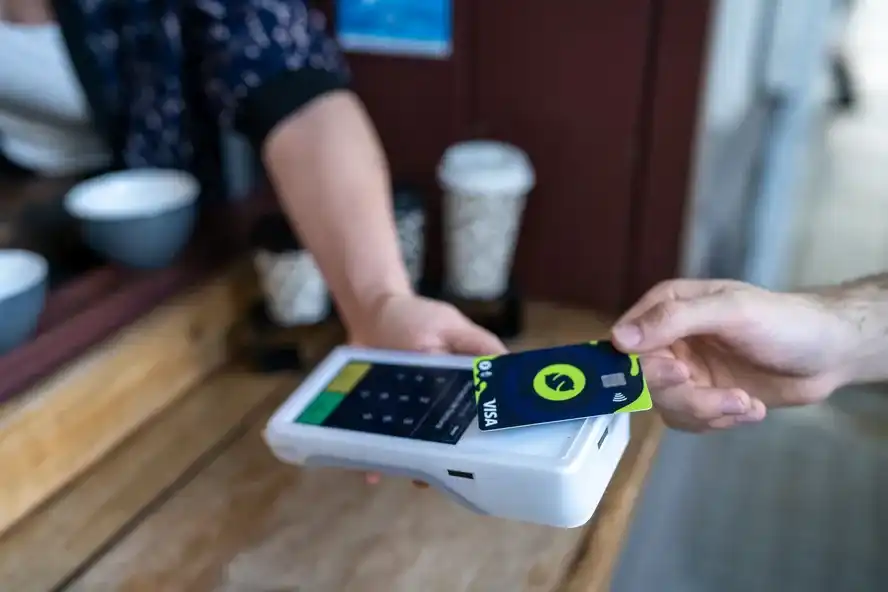
Users using Lemon Cash's physical U card, source: Lemon Cash
You can see an elderly person earnestly learning how to exchange on the Lemon Cash interface; a taxi driver asking peers in a group how to convert USDT into cash; a high school teacher telling her students, "Saving USDT is a bit safer than keeping cash in a drawer."
They use stablecoins for saving, transferring, and hedging against inflation; Lemon Cash has also embedded stablecoin wealth management into the platform, and some people even start to try the wealth management features on the platform to earn a bit of annual yield. Federico said he didn't have the courage, as too many "high-interest scams" in the past made him wary of any investments.
Sun mentioned that a significant portion of the developers who once propelled the rise of DeFi protocols actually come from Argentina, such as the security team of OpenZeppelin, researchers from Lambda Class, and the "Head of Smart Contracts" at MakerDAO.
Now, their compatriots are using stablecoins to bring that financial ideal into real life.
"We don't not want to trust the government; it's just that we've trusted before, and the cost was too high," Federico repeatedly said during the interview.
That distrust was completely shattered after the Milei memecoin incident. This new president, originally seen as a symbol of hope in Argentina, was unwittingly drawn into a crypto farce. Although he quickly dismissed those involved, societal sentiment could not return to what it was. The prideful Pampas people’s goodwill towards blockchain once again hit rock bottom, and Web3 entrepreneurs were forced to go "underground," with many starting to avoid publicly identifying as Argentinians just to protect themselves and their families.
Yet even so, stablecoins have slowly seeped in. In Argentina, starting from young consumer scenarios, merchants have gradually begun to accept stablecoin payments. Although it cannot yet be called the mainstream payment method here, once people learn how to use it, it will become the most natural choice.
The peso is still legally the "legal tender," but in people's lives, it has gradually been neglected. It is no longer a measure of value but more like an obstacle that must be circumvented.
In a country where the government frequently defaults and the economy continues to decline, people are starting to use USDT to continue saving and build a daily life that won't be crushed. Their financial lives no longer depend on the state, nor even on banks. Their trust has shifted from the state machinery to individual on-chain addresses.
People no longer wait for the system to bring redemption; instead, they have found ways to survive on their own. In an era when the currency of a country has failed, crypto has become another form of trust.
Southeast Asia | Young People Connecting to the World through Cryptocurrency
At six in the morning, Ho Chi Minh City is still shrouded in a thin mist. The street-side café has just opened, and the staff skillfully places a QR code sign that reads "USDC Accepted" on the counter, wiping the moisture off the touchscreen with their sleeve.
Alex orders an Americano, stands at the counter, opens his Bitget wallet, scans the code, confirms, and "ding," it’s done in one go. He didn't bring a physical wallet and didn't inquire about the exchange rate; using USDC to pay is as natural as brushing his teeth every day.
He is Ukrainian and has been traveling in Southeast Asia with his wife for the past year. From Chiang Mai to Bali, then to Kuala Lumpur and Ho Chi Minh City, they are always on the move. They belong to a borderless group, digital nomads. They don't need a fixed address but must have a financial system that can cross borders and is unrestricted. For Alex, that is USDC.
"I don't go to banks." His tone is calm, as if stating an obvious fact. Salary payments, daily expenses, savings—all resolved on-chain, unaffected by the local banking system, and without worrying about account freezes. "The wallet is my real bank."
This is not an exception.
Southeast Asia has a rare financial structural misalignment: bank cards have not penetrated the population deeply, but QR code payments are ubiquitous.
In Indonesia, nearly half of adults do not have savings accounts; in the Philippines, 44% of wage earners still bring their salaries home in paper bags; and in Vietnam, the credit card ownership rate is only 4%, making card payments a rarity for most people. Yet, at the same time, QR codes on mobile phones have long become the mainstay of payments, with almost everyone accustomed to scanning codes, from street vendors to massage parlors and bubble tea shops.
The national QRIS payment network in Indonesia has covered over 32 million merchants in just a few years, with more than 50 million users and an annual transaction growth rate of 226%. The Lowy Institute describes this wave as "payments being completed silently, from night market skewers to the tail lights of tuk-tuks."
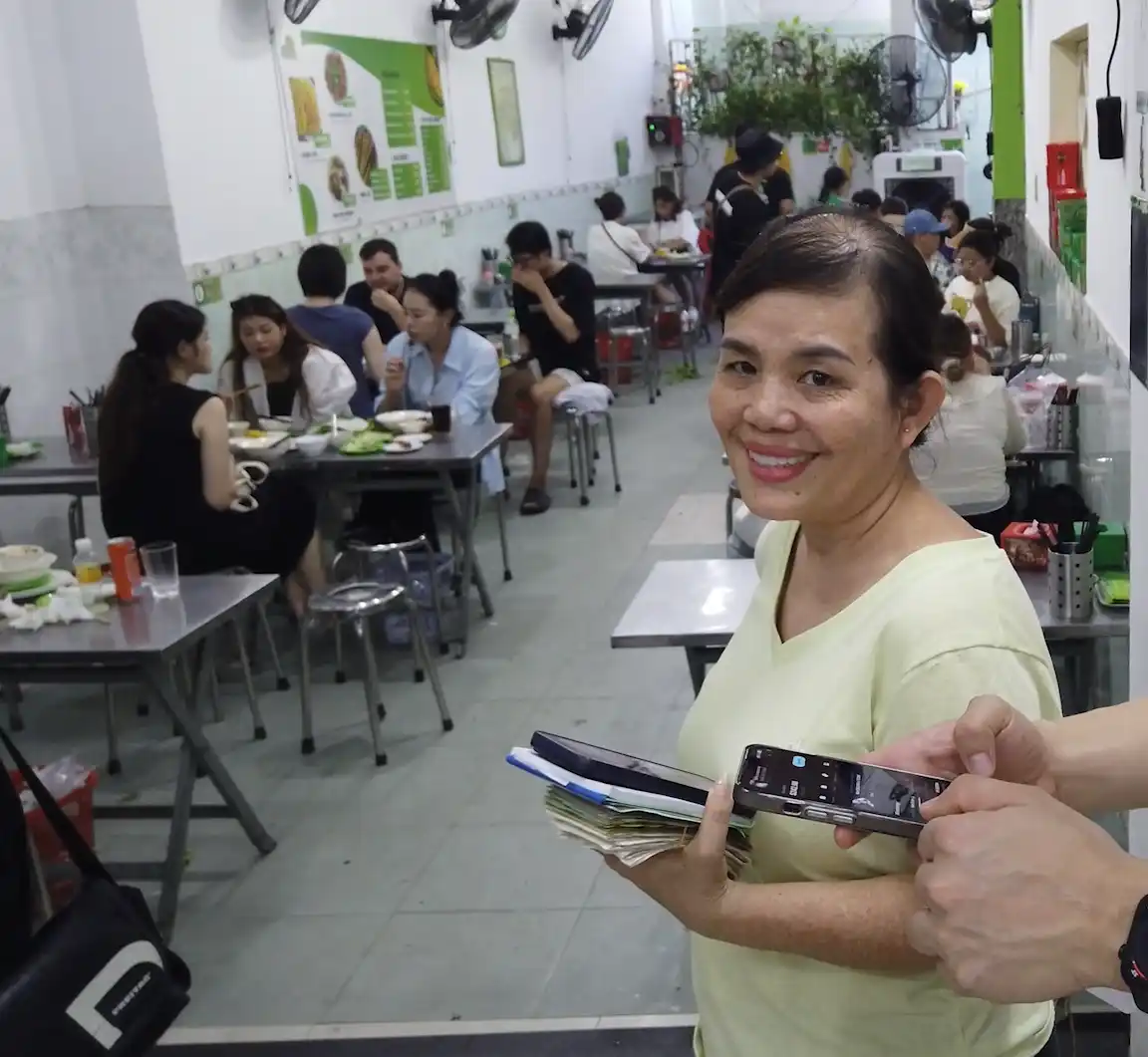
Using stablecoins for offline payments in Vietnam, source: Bitget Wallet
This reality of "cards being hard to popularize but QR codes thriving" provides a natural entry point for stablecoins.
Bitget Wallet is one of the earliest attempts to bridge this gap. They partnered with local licensed fiat exchange operators to build a complete backend clearing mechanism: users scan the code to make payments, while the backend simultaneously completes the conversion and settlement of stablecoins to local fiat in real-time. Karry, the CEO of Bitget Wallet, said, "We had already processed thousands of transactions daily within less than half a month of launching."
Among the users of these stablecoins, many do not even "trade cryptocurrencies."
Kari, a video editor in Bangkok, primarily serves clients from Europe and the U.S. She used to receive payments via Wise or SWIFT until her account was frozen for three days due to risk control. Since then, she has switched to using USDC, saying, "I don't understand blockchain, but I know stablecoins are convenient and don't require disputes with the platform."
Q is another digital nomad who has lived in Chiang Mai for years and used the U card launched by Infini for everything: dining, hailing rides, booking hotels, and even grocery shopping. It wasn't until Infini ceased operations that she realized she had already bet her life on this "on-chain to offline" payment system.
"I'm still looking for a replacement card," she said.
She visited several local exchange points in Chiang Mai and saw signs for "USDT/USDC exchange" at the counters, along with WeChat and Alipay listed as payment methods. However, the exchange rate was not friendly, with USDT trading at only 32.6 Thai baht. Still, she was willing to exchange, saying, "The process is much simpler than at a bank."

Local stablecoin exchange point in Chiang Mai; source: Q
She added with a smile, "When I go out to eat with friends, we split the bill and transfer using USDC; that's also a form of stablecoin payment, right?"
These details seem to piece together a shadow financial system. It does not rely on banks, does not require credit history, and bypasses regulatory narratives and definitions. The people using it are freelancers, workers, tourists, and vendors, building their own financial lives through a series of on-chain addresses.
This "invisible infrastructure" may be the true face of Mass Adoption.
Regulators have also noticed the direction of the tide. In 2023, the Monetary Authority of Singapore introduced a compliance framework for stablecoins, clearly requiring 1:1 reserves, redeemable mechanisms, and transparent audits. The demand from the public and official policies began to converge at a certain remarkable moment.
Looking across Southeast Asia, the popularity of stablecoins has never been a matter of waiting; they have quietly integrated into the streets: a salary remittance, a split bill for a meal, a cash exchange transaction. For young digital nomads, it is a foundational asset system for free migration; for local freelancers and blue-collar workers, it is a better solution for remittances, savings, and payments.
These individuals may not know what blockchain is, nor do they necessarily care about regulatory trends. But stablecoins have already seeped into their daily lives, slowly permeating through the cracks of existence like water.
Africa | Young People Abandoned by the Banking System
"We paid for our trip to see the animal migration directly with stablecoins."
Joy recalled her recent journey from the other end of the screen.
She is a Chinese entrepreneur doing business in Africa. She said that receiving payments in dollars takes too long, and using RMB involves a complicated exchange process.
Joy spent five minutes teaching the travel agency how to receive stablecoins using a wallet; once USDT was sent, it arrived within seconds. Then, they immediately began providing various services during the trip.
"Many people already know about this," she said with a smile, "they just don't know how to start."
In Africa, such "first times" happen every day. According to Chainalysis, in the past year alone, 43% of on-chain transactions in Sub-Saharan Africa came from stablecoins, offering choices that were previously excluded from the system.
This continent is vast and young; according to UN data from 2025, the median age of Africa's population is 19.3 years, with 60% under 25. Yet, on the map of the financial system, it has always been depicted as sparse and vague. Of the 54 countries, 33 are classified by the UN as "least developed countries." For many people here, a "bank account" is not the starting point of finance but a door that they can never enter.
You need identification, a fixed address, a stable income, and a credit history, which are all unattainable for most people.
So they changed direction and built their own financial system along the gaps.
Stablecoins are not high-concept cryptocurrencies; they are more like a blunt but reliable tool. They provide young people on this continent with the ability to receive, save, and spend money. Nigeria is a microcosm, with crypto trading volume reaching $59 billion in the past year, 85% of which consists of small remittances under $1 million, each representing fragments of daily life.
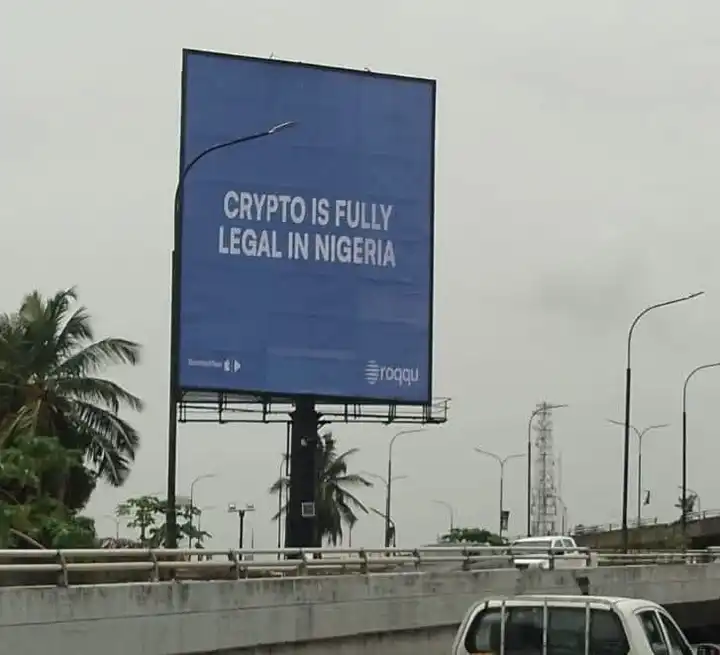
Billboard in Nigeria, source: Martin
Joy is the founder of Gimlet, a stablecoin payment platform. They build on-chain settlement systems for local merchants, where B2B clients pay with USDT, and merchants receive payments within seconds after confirming orders, much faster than before.
Her tone was calm as she spoke, as if discussing a very normal improvement in metrics. Yet you could sense the relief behind it, as the previously difficult flow of funds suddenly became manageable.
"When you travel in Africa and have coffee, you sometimes see small shops accepting cryptocurrency payments," she said. "Of course, it's not yet at a very widespread level, but it's much more common than a year ago."
Currently, most of the merchants accepting stablecoin payments are medium to large businesses, or hotels, travel agencies, and wholesalers that frequently deal with cross-border clients. Not everyone is using it, but you can see this system gradually penetrating everyday life. It is no longer "novel"; it just isn't "ubiquitous" enough yet.
Joy recalled that when their company was hiring locally, many educated young people would proactively ask, "Can we be paid directly in USDT?"
On one hand, this is to combat inflation; on the other, it is also for tax avoidance considerations. In the growth paths of these individuals, banks and modern finance have never truly stood by their side. It is not surprising that 70% of African countries face foreign exchange shortages, and sometimes companies have to wait weeks to exchange a little dollar to buy machinery. Being able to receive stablecoins directly has become a more reliable path. According to Michael, the founder of Interlace, banks in some developing countries typically allocate a certain amount of dollars to companies each month, and many businesses choose to exchange local currency for USDT through over-the-counter methods when their quotas are insufficient.
Tether CEO Paolo Ardoino said at the 2025 Bitcoin conference, "They have already been abandoned by the traditional financial system." This statement is not an exaggeration.
Western Union often takes 10%–15% of the transaction, with the slowest transfers taking several days; bank wire transfers seem professional but often require auxiliary verification, local intermediaries, and clearing agencies, with unpredictable arrival times and a high likelihood of interruption.
"The banking system over there is quite exclusive," Martin said, expressing helplessness as he recounted a colleague's experience. "The account was frozen without warning, and to unfreeze it, you have to pay a 'protection fee.' This situation has been going on for several years."
Martin is a representative of Noones in China. This cryptocurrency trading platform supports various payment methods, including gift cards and bank transfers, and has rapidly accumulated a large user base in Nigeria and Ghana in recent years.

Noones at an exhibition in Africa, source: Martin
In contrast, on-chain stablecoin transfers are fast, cheap, visible, and verifiable. Data estimates that sending $200 out of Sub-Saharan Africa using stablecoins can reduce costs by about 60%. That crypto wallet is the first truly personal account for many people in their lives.
However, only a small portion of young people engage in trading cryptocurrencies; most are not in a hurry to use stablecoins to participate in on-chain adventures. Joy said that most people simply leave their USDT sitting there. They do not participate in DeFi, do not engage in wealth management, and do not fuss over it.
"They only recognize the Tron chain and basically all use USDT," Martin chuckled as he spoke about the platform users' habits. "They haven't even heard of Solana or TON. Among mainstream coins, they only know Bitcoin; even Ethereum is not popular there."
They have experienced how inflation can turn cash into worthless paper in just three months, with stocks, bonds, and gold being out of reach. For them, stablecoins that can retain value and not depreciate are already top-notch.
"They are only doing small transfers, usually just a few hundred U; over a thousand U is already a large amount, which is almost a month's living expenses for a family," Martin said.
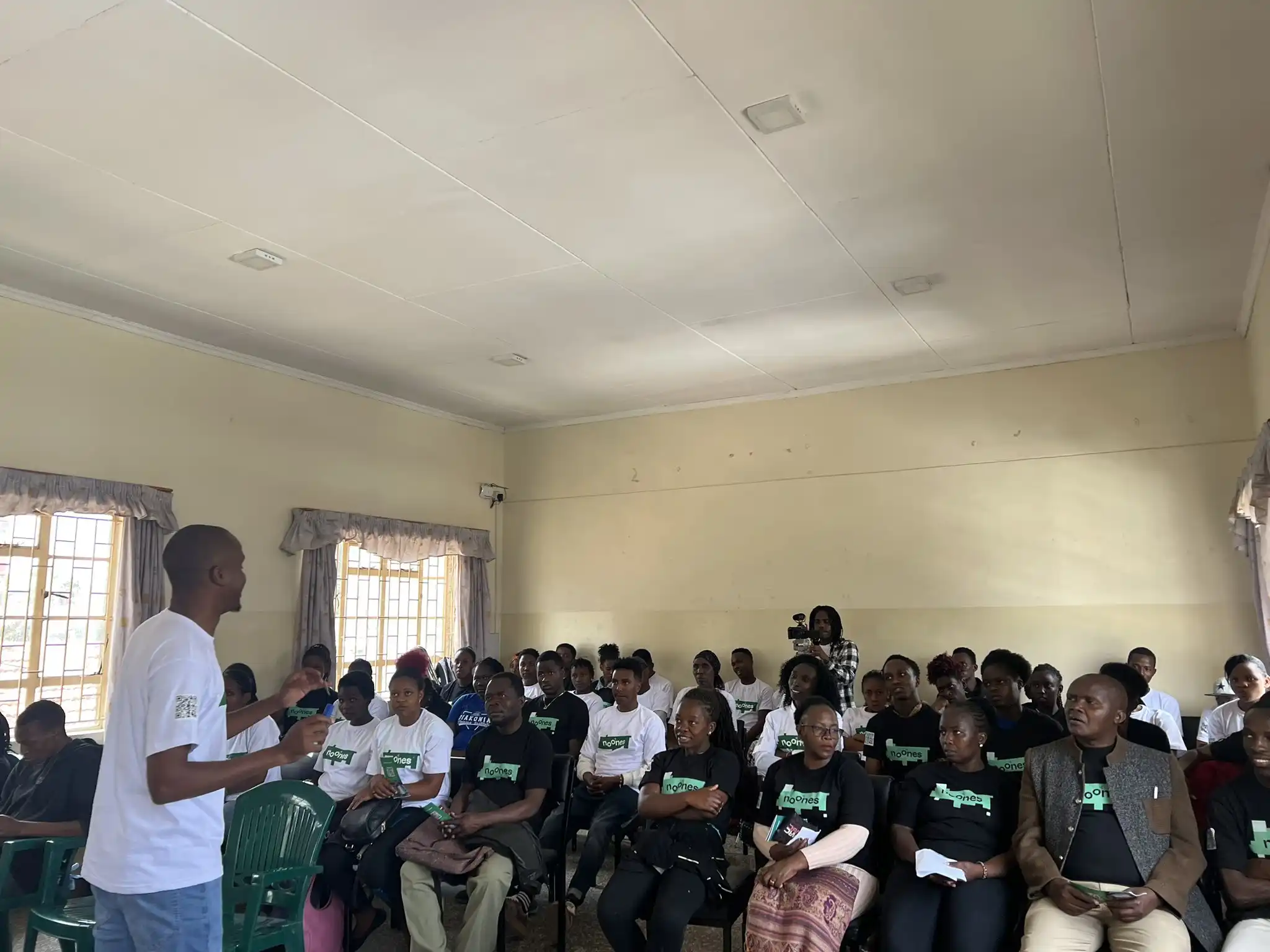
Noones' offline presentation in Nairobi, the capital of Kenya, source: Noones Africa
The total stablecoin trading volume across the African continent has exceeded $30 billion, and the adoption rate in Sub-Saharan Africa has reached 9.3%. This is a future that is happening, not just an imagination of the crypto circle.
In the realm of cross-border trade, stablecoins have become the default tool for an increasing number of Chinese companies doing business in Africa. They offer high payment efficiency, circumvent currency exchange difficulties, and eliminate various uncertainties associated with intermediaries. The 2025 China-Africa Economic and Trade Expo signed 176 cooperation projects, with a total amount exceeding $11.3 billion. This systemic flow of funds is essentially building use cases for stablecoins. Joy believes that once the Hong Kong dollar stablecoin is launched, it will quickly gain traction in Africa.
Cryptocurrency is rewriting the financial map of Africa. Nigeria has ranked second in the global adoption index, with Ethiopia, Kenya, and South Africa also making it into the top 30. The popularity of stablecoins in Africa is gradually emerging, and Joy said, "Once the 2027 elections come and inflation pushes further, stablecoins will enter the daily lives of more people."
In Africa, money has not left them; rather, banks have disappeared from their lives. There are no counters, no receipts, and no credit history. The people here have never belonged to the coordinates of traditional finance; this time, the coordinates have flipped and landed on them. Here, not everyone understands cryptocurrency, but more and more people are using stablecoins to receive salaries, save living expenses, and bypass banks.
Conclusion | The Form of Money is Slowly Changing on the Other Side of the World
In our daily lives, money is a line of numbers on a banking app, the sound of a scan at the cash register, and the text message received when a salary is credited.
But in a broader world, "money" is often absent; it is Western Union with its doors closed, the only bank branch within dozens of kilometers, the fan that cannot be waved in a long queue, and the sunburned skin cracking under the heat.
Stablecoins like USDT and USDC are not just codes and consensus; they are more like wooden boats carrying people across the river in a storm of currency.
One day, you might encounter such receipts around the world:
"3.7 USDC Received" flashing across a QR code lightbox on a street corner in Vietnam;
"0.85 USDT Confirmed" reflected in the silhouette of a coffee cup in Kenya;
"Rent Paid 350 USDT" written on a memo in an apartment shared in Argentina.
These numbers are quietly rewriting the meaning of "money." They have replaced the faces of currency from presidential portraits to hexadecimal, moving trust from paper currency ink to the blockchain.
Stablecoins have quietly caught those abandoned by traditional finance, with countless small payments completed at the fingertips of individuals, piecing together the future financial system day by day.
The form of money is quietly changing on the other side of the world.
免责声明:本文章仅代表作者个人观点,不代表本平台的立场和观点。本文章仅供信息分享,不构成对任何人的任何投资建议。用户与作者之间的任何争议,与本平台无关。如网页中刊载的文章或图片涉及侵权,请提供相关的权利证明和身份证明发送邮件到support@aicoin.com,本平台相关工作人员将会进行核查。




